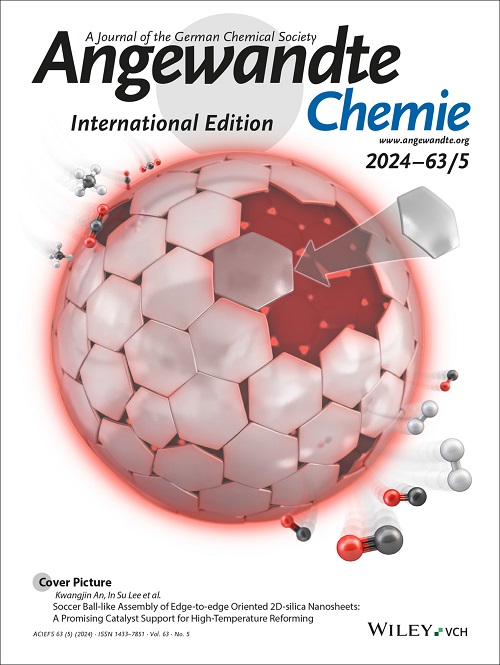Zwitterionic Dipeptide Surface Functionalization of Detonation Nanodiamond for Enhanced Control in Biological Environments
IF 16.1
1区 化学
Q1 CHEMISTRY, MULTIDISCIPLINARY
引用次数: 0
Abstract
Utilizing nanoparticles as innovative theranostic agents for biomedical applications requires full control over the material’s properties to dictate their interactions within a biological environment. Owing to its versatile surface chemistry and high biocompatibility, nanodiamond (ND) represents a promising platform for novel healthcare treatments. To ensure the performance and safety of NDs, their properties and behavior must remain unchanged upon administration, a key challenge in nanomedicine. Recently, zwitterionic surface modifications have emerged as new strategies to substantially improve protein‐repelling properties and biocompatibility of nanomaterials. Using for the first time covalently conjugated zwitterionic dipeptides as surface modulators for ND particles, we were able to provide a readily accessible, reproducible and tunable functionalization. The obtained particles demonstrate enhanced colloidal stability and conservation of particle size over a broad pH range and in different protein‐containing media compared to the starting material. By simple selection of different dipeptides, we can carefully tailor the biocompatibility and cellular uptake of functionalized NDs. We reveal the functionalized NDs’ behavior in biologically relevant 3D organotypic models and how different dipeptide functionalized NDs interact with squamous epithelium ex‐vivo. The results pave the way for various applications, e.g., biosensing, tissue engineering or targeted drug delivery of these highly biologically suitable nanoparticles.求助全文
约1分钟内获得全文
求助全文
来源期刊
CiteScore
26.60
自引率
6.60%
发文量
3549
审稿时长
1.5 months
期刊介绍:
Angewandte Chemie, a journal of the German Chemical Society (GDCh), maintains a leading position among scholarly journals in general chemistry with an impressive Impact Factor of 16.6 (2022 Journal Citation Reports, Clarivate, 2023). Published weekly in a reader-friendly format, it features new articles almost every day. Established in 1887, Angewandte Chemie is a prominent chemistry journal, offering a dynamic blend of Review-type articles, Highlights, Communications, and Research Articles on a weekly basis, making it unique in the field.

 求助内容:
求助内容: 应助结果提醒方式:
应助结果提醒方式:


